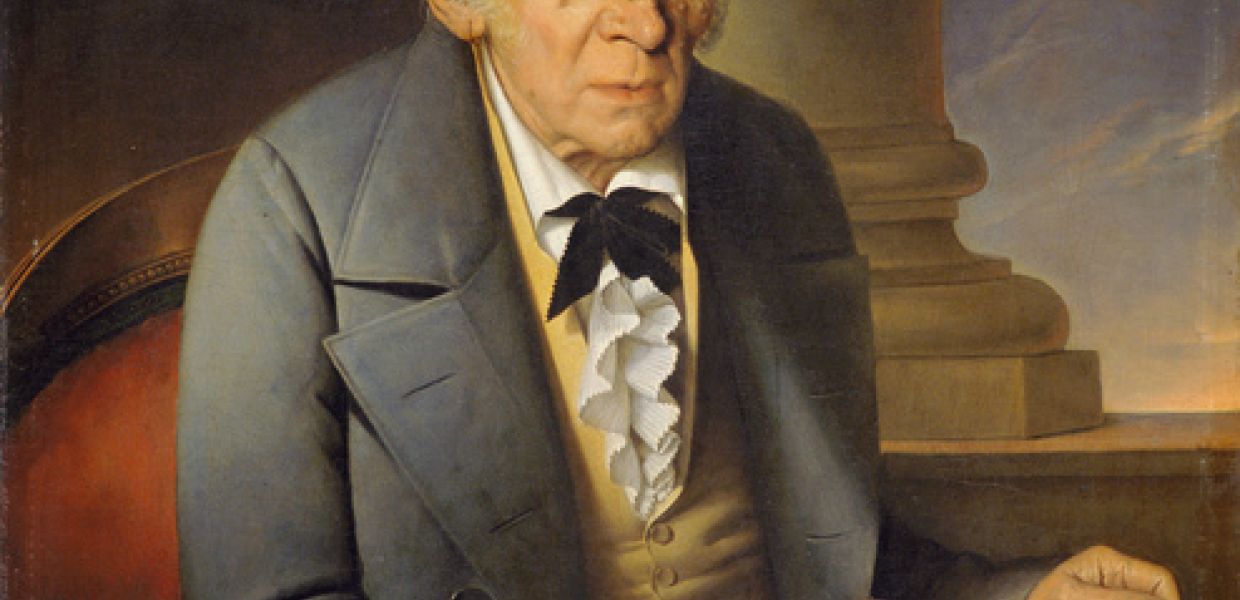Choosing a country's artworks for Europeana 280: Slovenia

This month, we’ve started highlighting some of the works nominated as part of Europeana 280 in preparation for the launch of the campaign next month. On Europeana Art History Collections, we’ll showcase treasures from a different country each week, and if you download the popular app DailyArt, you can enjoy a Europeana 280 artwork every Tuesday and Sunday in March.
We’ll also continue this blog series, finding out more how different countries went about making their choices. Here, Europeana 280's Exhibition Coordinator Ann Maher highlights nominations from Slovenia.
In nominating their national treasures for the Europeana 280 collection, many countries balanced selections from early centuries with contemporary work including examples from living artists who continue to play a significant role in their nation’s cultural history. This was the approach taken by Slovenia, who nominated five works from their National Gallery including examples from gothic and neoclassicism periods, and the other five from the Museum of Modern Art. What are the highlights of their final selection?
Slovenian modernism
The Museum of Modern Art explained how they went about making their contemporary nominations: “In Moderna galerija's case, the selection process tried to include some of the most representative or best artworks in its national collection.” Gabrijel Stupica is considered one of Slovenia’s finest painters and one of the most outstanding abstractionists in Yugoslavia. The characteristic motifs of his work emerged in the 1960s and 70s, and according to the Museum in a recent retrospective, “now represent canonical images of Slovenian modernist painting.” The Triumph of Flora, painted in 1965, presents the image of a young, yet somehow old-looking ‘bride’, typical of his late or white period.
Marij Pregelj grew up in a literary family - his father was an expressionist writer - and he is considered one of Slovenia’s pre-eminent postwar modernists. His paintings, such as Pompeian Company at Table, also from the 1960s, were influenced by wartime experiences. According to the Museum: “The dead bird signals hunger or both concrete and symbolic impoverishment and appears in a few paintings Pregelj made immediately after WWII, which depict scenes of life in labour or prisoner-of-war camps, which the artist himself experienced twice.”
Artist for Peace
The range of contemporary work in the Europeana 280 collection enables us to discover some of the counterculture movements of the 1960s. The OHO group was a Slovene artistic collective who participated in conceptual and land art exhibitions at home and abroad, including New York. Programming and ritual were principles applied to all areas of their work that included literature, film, and printmaking. In Programmed Print - the Vertical Line Program (1968), Marko Pogačnik used complex numerical programs to create clearly abstract forms. In 1971 Pogacnik founded a rural and artistic colony, the ‘Sempas Family’ (who exhibited at the Venice Biennale in 1978) that put a greater emphasis on spirituality and the environment. Pogacnik is still working in this direction today and in February 2016, became a UNESCO Artist for Peace.
Pleasing horror of nature
The nominations from the National Museum of Slovenia in Ljubljana reflect earlier artistic periods. Neoclassicism is represented by the 19th century work, Ideal Landscape with a Young Man Killing a Snake, by Franc Kavčič/Caucig, painted at a time when artists, influenced by Kant and the writings of English philosophers, were focusing on the sublime qualities of nature. According to the Museum: “The mightiness of nature combined with the aesthetics of pleasing horror are present here.”

Portret očeta / Portrait of the Artist's Father (1848), Jožef Tominc (1790-1866), Narodna Galerija, Ljubljana / National Gallery Of Slovenia, CC BY-SA
According to the National Gallery of Slovenia, Tominc’s works represent the highest achievement in Slovenian art in the first half of the 19th century. A portrait of his father, painted in 1848, is the nomination for Europeana 280.
For the ascending middle classes of Central Europe during these times, realistic renderings of security and home lives were artistically in demand. The Beidermeier period resulted in a blossoming of domestic arts particularly in furniture design and interior decorating that catered to new urban bourgeois audiences. Jožef Tominc worked in the Austrian Empire and Italy and established himself mainly on the Gorizia and Trieste scenes. The nomination for Europeana is a portrait of the artist’s father painted in 1848 for his eightieth birthday.
But what is the Moderna galerija looking forward to in Europeana 280? They welcome the exposure for distinctive work: “The promotion of smaller, less known cultural or art institutions, their collections, and especially artists and artworks that are unknown to the general (or the Western EU) public”. They also look forward to an expansion in our artistic horizons: “Hopefully it will have the effect of discovering the yet unknown in art or the rediscovery of the already known.”
We look forward to appreciating more art selected for the Europeana 280 campaign soon. In the meantime, follow the conversation on Twitter via #Europeana280.
